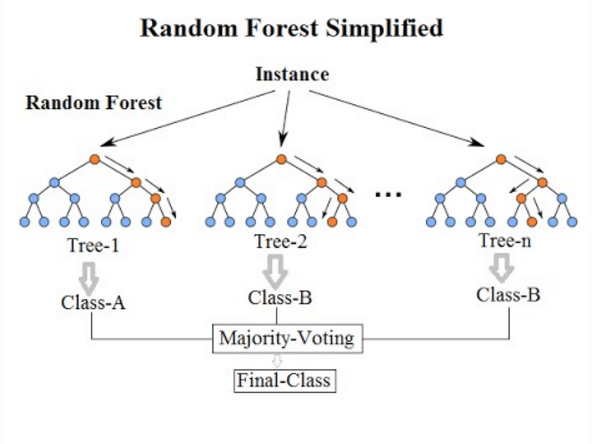TL:DR
Highly specialised predictive analytics are sought to reveal a more profound understanding of data.
Predictive analytics rely on machine learning models such as decision trees and Support Vector Machines (SVMs) as their core.
Predictive analytics benefit from ensemble learning strategies such as bagging and boosting to boost prediction precision.
Predictive modelling gains from sophisticated statistical methods like Bayesian inference and analysis of time series data.
Predictive analytics depend on deep learning approaches like neural networks and Long Short-Term Memory (LSTM) networks for handling intricate data patterns.
In the realm of AI predictive analytics, machine learning unveils a vast landscape of insight, where precise predictions are more akin to scientific methods than mere speculation. These innovative approaches integrate the newest algorithms into robust predictive formulas capable of foreseeing everything from consumer needs to market trends to changes in operations with exceptional accuracy.
Like a skilled chef who constantly adjusts and perfects their most popular dishes based on customer reviews, machine learning enables these predictive models to refine and enhance their formulas as new data flows in. The algorithms adapt and grow, absorbing fresh information to accurately create forecasts and insights of future conditions and trends.
The appetite for accurate forecasts provided by sophisticated predictive analytics is at an all-time high. Data analysts are always on the lookout for methods to surpass conventional approaches and uncover deeper insights within their data. By keeping up with the latest developments in predictive analytics, data analysts can offer the highest value to companies in need of advanced forecasting and decision-making support. In light of this, we are providing an overview of AI predictive analytics and evaluating the methods, including machine learning algorithms, ensemble modelling, deep learning, and advanced statistical techniques.
Machine Learning Algorithms
Progress in the area of AI predictive analytics hinges on the use of machine learning algorithms. These programs can absorb information from the data they receive and then apply this knowledge to tackle intricate issues, making forecasts or choices without needing to be directly instructed on how to do so.
In this section, we’ll look into two categories of machine learning algorithms: fundamental and composite. Various projects are more appropriate for one over the other, and each requires distinct approaches.
Basic Machine Learning Algorithms
Foundational AI predictive analytics rely on fundamental machine learning algorithms. These algorithms, despite their straightforward nature in both structure and operation, absorb data from the past to produce forecasts that aid companies in making decisions based on data. They are referred to as “basic” not due to their simplicity or basicness, but because they are the essential instruments in a data analyst’s arsenal. They frequently serve as the initial phase in data analysis, thanks to their capacity to manage linear data and the simplicity of understanding their outcomes. Methods they employ to achieve this include:
Decision Trees: Decision trees are straightforward yet effective methods for handling both numerical prediction and categorisation problems. They employ a hierarchical structure of choices based on the characteristics of the data. Every branch in the tree signifies a criterion for making a decision, each twig denotes a condition, and every leaf signifies a result. Although they are straightforward to comprehend and explain, decision trees frequently suffer from overfitting, indicating that they might not generalise well to new data.
Support Vector Machines: Support Vector Machines (SVMs) are primarily designed for categorisation tasks, but they are also capable of handling regression tasks. They position every data point in a space with dimensions equal to the number of attributes and then locate the hyperplane (a subspace with one dimension fewer than its original space) that most effectively divides the various categories. SVMs provide high accuracy and excel in dealing with complex data sets.
Ensemble Learning Methods
In situations where standard machine learning models typically struggle, the use of ensemble learning approaches has been found to provide additional support. These approaches merge several machine learning models to enhance both the accuracy and reliability of their predictions.
The fundamental concept is that the aggregation of predictions from multiple models can often lead to superior outcomes compared to what any single model could accomplish on its own. This concept might appear paradoxical. After all, isn’t the goal of machine learning to develop the most effective model for a specific problem?
While this is theoretically possible, it’s unrealistic in practice. No model is flawless. Each has its own set of strengths and weaknesses, and these strengths and weaknesses often work together in a complementary manner. Let’s examine in more detail some of the strategies involved in ensemble learning and how they overcome the limitations of individual models while enhancing their most advantageous features.
Bagging and Boosting: Bagging and boosting are two well-known methods for combining models. Bagging, which stands for bootstrap aggregation, lowers the variability in predictions by combining the outcomes of several classifiers. On the other hand, boosting creates powerful classifiers from less powerful ones by concentrating on the data points that are difficult to predict. These approaches can result in enhanced precision and prevent the issue of overfitting.
Random Forest and Gradient Boosting Machines: Random Forest and Gradient Boosting Machines (GBMs) stand as two of the leading approaches in ensemble learning. Random Forest consists of a collection of decision trees, frequently developed through the bagging technique. This approach merges hundreds or even thousands of decision trees, resulting in predictions that are more stable and reliable.
Conversely, Gradient Boosting Machines employ a boosting strategy to build a powerful predictive model. They develop numerous models incrementally, in a step-by-step, cumulative way, with each subsequent model refining the errors of the previous one, culminating in accurate predictions.

Advanced Statistical Techniques in AI Predictive Analytics
Adopting AI predictive analytics also involves relying significantly on complex statistical methods such as Bayesian inference and time series analysis. These methods offer the structure required for precise forecasting, uncovering important information, and examining patterns and trends across periods. If you’re unfamiliar with these terms, you might not understand their significance. Let’s delve deeper into these ideas.
Bayesian Inference and Probabilistic Modeling
Bayesian inference is a statistical approach that updates the likelihood of a hypothesis as more evidence or information is gathered. This process allows predictive models to refine their forecasts as they are presented with new data, enhancing the precision of future forecasts.
Probabilistic modelling, a key component of Bayesian inference, applies probability laws to forecast a particular outcome. Within the realm of predictive analytics, Bayesian inference and probabilistic modelling bring distinct advantages. By integrating prior knowledge and evidence, Bayesian inference enables more detailed predictions that consider uncertainty and different conditions. It establishes a mathematical structure for revising our beliefs with new data, facilitating more adaptive and precise predictive modelling.
Additionally, the use of probabilistic modelling enhances the dependability and strength of these forecasts. It enables experts to assess the degree of uncertainty and determine the chances of different results instead of offering definitive forecasts. This aspect is revolutionary in critical business settings where evaluating risk is as crucial as making predictions.
To ecommerce the skill to present forecasts in terms of probabilities can be immensely beneficial. Both Bayesian inference and probabilistic modelling are in line with the fundamental principles of sophisticated predictive analytics: they accept complexity, absorb new information, and measure uncertainty. By incorporating these sophisticated statistical methods into their arsenal, data analysts can offer more detailed, flexible, and useful insights.
Time Series Analysis and Forecasting
Time series analysis plays a crucial role in AI predictive analytics, focusing on data gathered over a specific timeframe. This method of statistics recognises recurring patterns or trends and applies these insights to forecast future outcomes. It is frequently applied in the analysis of stock markets, economic predictions, and projections of sales. A key feature of time series analysis is its capacity to handle data collected at various intervals, such as daily, monthly, or annually. By grasping the fundamental patterns or trends within these datasets, analysts can forecast future occurrences, also referred to as forecasting, with greater precision.
The stock market serves as a prime illustration of this concept, depending greatly on analyzing data over time, and incorporating past information on stock prices, trading volumes, and additional elements to predict upcoming patterns. In a similar vein, businesses employ historical sales data along with various factors such as holidays, sales promotions, and economic conditions to generate precise sales predictions.
There are various approaches to time series analysis, such as moving averages, exponential smoothing, and autoregressive integrated moving average (ARIMA) models. Each approach has its own set of advantages and disadvantages, and selecting the appropriate model can greatly affect the precision of the forecasts. A common challenge in time series analysis is dealing with ‘seasonality,’ or recurring patterns. For example, retail sales tend to rise during the holiday season or specific promotional times. Identifying, comprehending, and adapting to these seasonal patterns can enhance the accuracy and dependability of the forecasts.
Deep Learning Techniques
Advanced AI predictive analytics also heavily rely on deep learning methods, which are crucial for handling vast data sets and spotting intricate patterns and relationships that might be overlooked by alternative approaches. This makes them an indispensable resource for various types of analysis. It’s important to be familiar with several deep learning methods which are shaping ecommerce, among which are some of the most beneficial:
Neural Networks
Neural networks consist of a series of mathematical models created to identify patterns. They analyze information from the senses by using a form of artificial intelligence, categorizing, or grouping the initial data. The patterns they identify are numerical and are represented in vectors, which are used to translate all types of data from the real world, including pictures, sounds, text, or sequences of time. These networks are built to resemble the structure of the human brain, which is why they are called neural networks.
They have layers of interconnected units or “neurons” that send and receive information. They receive several inputs, perform intricate calculations, and provide a prediction or a decision as a result. Every unit in the network gives a value to its input based on the result of the task. This value is then used to modify the weights of the unit, which improves its performance as it learns. This continuous cycle of modification and learning enables neural networks to adjust to new inputs and situations, making them extremely adaptable in various fields. From identifying objects in images and analysing emotions in the text to predicting future events and detecting unusual activities, neural networks have become a fundamental part of sophisticated AI predictive analysis.
Convolutional Neural Networks (CNN)
Convolutional Neural Networks (CNNs) are a kind of advanced neural network primarily utilized for handling visual data. They are engineered to receive an input image, prioritize different elements of the image, and distinguish among them.
Recurrent Neural Networks (RNN)
In contrast to conventional neural networks, Recurrent Neural Networks (RNNs) are specifically crafted to handle data that changes over time. They are capable of handling sequences of data, including time series and text, making them perfect for applications such as recognizing speech, generating language, and translating between languages. RNNs accomplish this by including loops within their structure, enabling data to flow from one point in the sequence to the next. Nonetheless, RNNs face challenges with lengthy sequences, and this is where Long Short-Term Memory (LSTM) units step in.
Long-Short Term Memory Networks (LSTM)
LSTMs represent a unique kind of Recurrent Neural Network (RNN) engineered to sidestep the issue of long-term dependency that is often seen in standard RNNs. They can retain data for extended durations, which proves beneficial for various uses, particularly those involving sequences of greater length. For example, in the context of language translation, the interpretation of a word might rely on the preceding clause or sentence, which could span a considerable distance in terms of sequence length. LSTMs allow the network to monitor these long-term dependencies, resulting in more precise forecasts.
See article: 10 Deep Learning Methods You Should Know.
Conclusion
Explaining the capabilities of AI predictive analytics, and the methods used to achieve results discriminates depending on not only the current state of format of the application, but the mechanism used to reach a given solution.
Ultimately for ecommerce, the focus for the retailer should undoubtedly be “what the consumer wants”. If you know that, then it is merely a matter of presenting it. This aspect of AI has developed into the most lucrative aspect of digital marketing today, hyper-personalisation. We have explained hyper-personalisation in a separate article. Likewise, the distinction between vendors is considerable, so we have provided a feature on what those distinctions are via the link.





